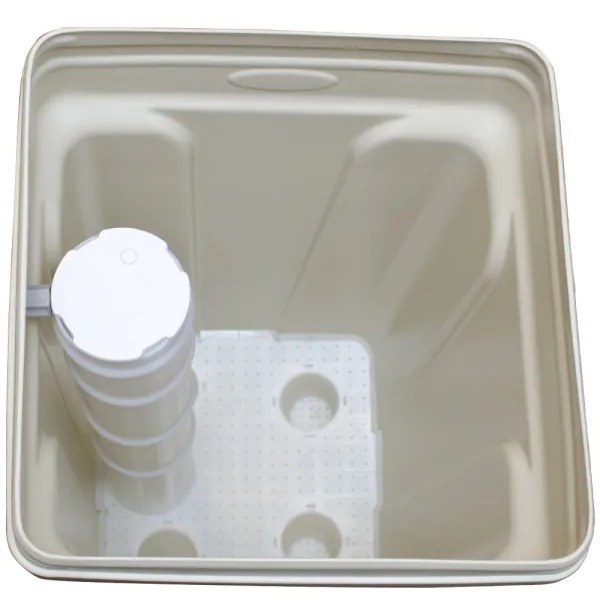Did you know that your soft water brine tank can hold up to two hundred pounds of salt but only uses a small portion each cycle? Surprising, right? If you’ve ever stared at that plastic container and wondered, “What’s really going on in there?” — you’re not alone. Understanding how your soft water brine tank works will give you more confidence in your water treatment system investment.
What Happens Inside a Brine Tank?
Think of your brine tank as the fuel station for your softener. Its main mission? To recharge the resin beads that capture those hard minerals like calcium and magnesium. But how? The process comes down to something called ion exchange. When your resin beads get saturated with hard minerals, they need to be cleaned. Here’s where the soft water brine tank steps up.
Quick Breakdown:
- Water flows into the tank, dissolving the salt to create brine.
- This brine solution is drawn into the resin tank to swap sodium for hard minerals.
- The hard minerals get flushed out and the beads are ready to soften your water again.
Ever wondered if too much salt is bad for your system? Or what happens if your tank runs dry? Keep reading — we’ll get there.
Step-by-Step: How Regeneration Works
Let’s make this crystal clear. The brine tank’s job is to help your system ‘regenerate’. But what does that mean exactly? It’s not rocket science, but it is solid water science.
- Brine Fill: Water enters your brine tank and mixes with salt, creating a salty brine.
- Brine Draw: The system draws this brine into the resin tank. Sodium ions kick out the hard minerals stuck to the resin beads.
- Rinse Cycle: The leftover brine and flushed-out minerals are drained away.
- Refill: The brine tank gets topped up with fresh water for the next cycle.
Pro Tip: A properly working brine tank means your softener works at peak performance. Ever noticed your water feeling slimy? You might need to check your salt levels.
Why Ion Exchange Is the Secret Sauce
The ion exchange process is the reason your showerhead doesn’t crust over with scale. Sodium ions replace the ‘hard’ ions — calcium and magnesium. No hard water stains, no scale build-up, no surprise appliance repairs. That’s a win for your wallet and your water.
Have you checked if your brine tank floats and valves are working correctly? A tiny malfunction can disrupt the whole regeneration cycle.
Which Salt Is Best for Your Brine Tank? A Practical Comparison
Here’s a simple table to help you decide which salt keeps your system clean, efficient, and cost-effective.
| Salt Type | Pros | Cons | Best For |
| Rock Salt | Cheapest, widely available | More impurities, more residue | Budget setups |
| Solar Salt Pellets | Higher purity, less residue | Can bridge if humidity high | Standard residential use |
| Evaporated Salt | Highest purity, minimal residue | Costlier | Premium residential or commercial |
| Potassium Chloride | Eco-friendly, good for plants | Expensive, less efficient | Septic systems, sensitive areas |
Troubleshooting: Common Brine Tank Woes
Like any system, your water softener brine tank needs a watchful eye. Here’s what to look out for:
- Salt Bridges: A crusty layer that prevents brine mixing properly.
- Mushy Salt: Means poor water flow and poor brine draw.
- Low Brine Levels: Signals a float issue or clogged valve.
Quick Fix: Break up bridges with a broom handle. Keep your tank half full. And inspect the float assembly every few months.
3 Questions You Should Be Asking
- Is your brine tank sized right for your home or business needs?
- Do you know when to clean or sanitize your brine tank?
- Are you using the right salt type for the local water hardness?
If you’re unsure, your trusted water treatment service partner can guide you with expert-engineered solutions that fit your unique system.
What This Means for You
Your soft water brine tank is a workhorse behind the scenes. When it’s running right, you enjoy clear pipes, spotless glassware, and longer-lasting appliances. If you ever spot unexpected hardness or salty taste, your brine tank is the first place to check.
Still have questions? Don’t hesitate to ask your local professional team. With advanced water system design, premium-grade products, and hands-on technical support, your water stays crystal clear and your peace of mind stays intact.
Ready to enjoy the benefits of a well-maintained brine tank? Keep your salt levels steady, do routine checks, and trust an expert when needed. Clean water is not just an option — it’s your right.



